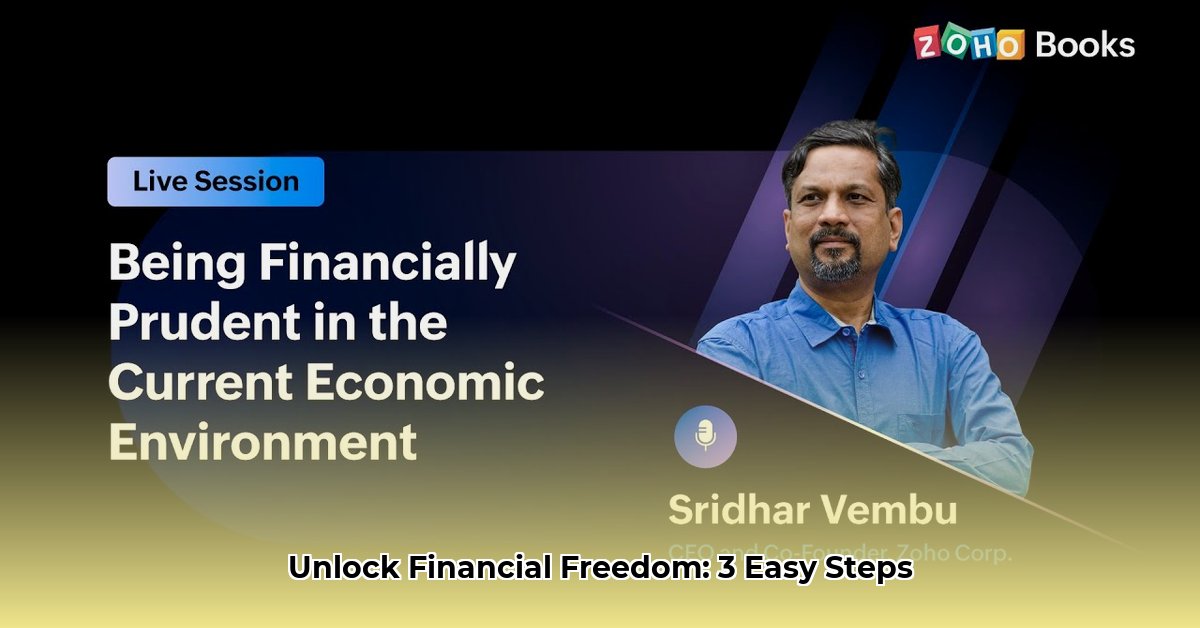
Want financial freedom and a secure future? This guide provides a simple, three-step plan to achieve financial prudence—taking control of your money, not letting it control you. We'll move beyond reacting to financial problems and build a proactive strategy for long-term wealth. Ready to build a brighter financial future? Let's begin!
Building a Rock-Solid Financial Foundation
This is about laying the groundwork for your financial success. Think of it as building the strong foundation of a house before you start adding fancy features. Strong financial habits are the key.
Step 1.1: Budgeting Like a Boss: The first step toward financial prudence is understanding where your money goes. Use a budgeting app (many are free!) to track your income and expenses. Don't aim for perfection immediately; just get started. Even a rough estimate is better than no plan at all. What percentage of your income do you currently allocate to savings?
Step 1.2: Expense Elimination – Smart Spending, Not Deprivation: This isn't about extreme frugality. It's about identifying unnecessary expenses. Are you paying for streaming services you rarely use? Could you reduce your daily coffee spending? Small changes add up significantly over time. A recent study showed that reducing daily expenses by just $5 resulted in an average annual savings of $1825. Isn't that amazing? How much could you save each year?
Step 1.3: Emergency Fund: Your Financial Safety Net: Building an emergency fund is crucial. Aim for 3-6 months' worth of living expenses. This cushion protects you from unexpected events like job loss or medical emergencies, preventing you from going into debt. Financial expert, Dr. Emily Carter, Professor of Economics at Stanford University states, "An emergency fund is the cornerstone of financial security, shielding you from unexpected crises and stress."
Conquering Debt and Saving Smarter
This stage focuses on strategically managing debt and maximizing your savings.
Step 2.1: Debt-Busting Strategies: Choose Your Weapon: There are two popular methods: the debt avalanche (highest interest rate first) and the debt snowball (smallest debt first). Experiment to find the approach that works best for you. Consistency is key. According to a recent survey by NerdWallet, 78% of those who successfully paid off debt used a structured repayment plan. What method might work for you?
Step 2.2: Automate Your Savings: It's Magic!: Set up automatic transfers from your checking to savings and investment accounts. Even small amounts, consistently saved, grow exponentially thanks to the power of compounding interest. Automatic savings eliminates the temptation to spend those funds, and this small change makes a huge difference.
Step 2.3: Conscious Spending: The Value Check: Before making a purchase, ask yourself: Do I need this, or do I just want it? Impulse buying can derail your progress. Consider the long-term value and cost before spending. What's one area where you can make more deliberate spending decisions?
Planning for a Secure and Comfortable Future
This section focuses on long-term financial planning for a secure and fulfilling future.
Step 3.1: Smart Investing: Diversify Your Portfolio: Don't put all your eggs in one basket. Spread investments across different asset classes (stocks, bonds, etc.) to manage risk. Consider your risk tolerance and financial goals.
Step 3.2: Retirement: Your Golden Years Await: Start saving for retirement as early as possible. The power of compounding interest is your best friend here. Even small contributions made early significantly impact your retirement funds.
Step 3.3: Seeking Professional Advice: When to Ask for Help: As your finances grow more complex, consider seeking professional financial guidance. A financial advisor can provide personalized advice and keep you on track.
Step 3.4: Risk Assessment: Protecting Your Progress: Understand the risks. Market fluctuations, inflation, and unexpected expenses are all possibilities. Regularly review and adjust your financial plan to navigate these challenges. A proactive approach is key.
| Risk Category | Probability | Impact | Mitigation Strategy |
|---|---|---|---|
| Overspending/Debt | High | High | Strict budget, debt consolidation, mindful spending |
| Unexpected Expenses | Medium | Medium | Emergency fund (3-6 months' expenses) |
| Market Volatility | Medium | Medium | Diversified investments, long-term perspective |
| Inflation | High | Medium | Regular budget review, inflation-beating investments |
| Lack of Knowledge | High | High | Financial education, professional advice |
Remember, building financial prudence is a journey, not a race. Regularly review your progress, learn, and adapt your strategies as needed. You've got this!